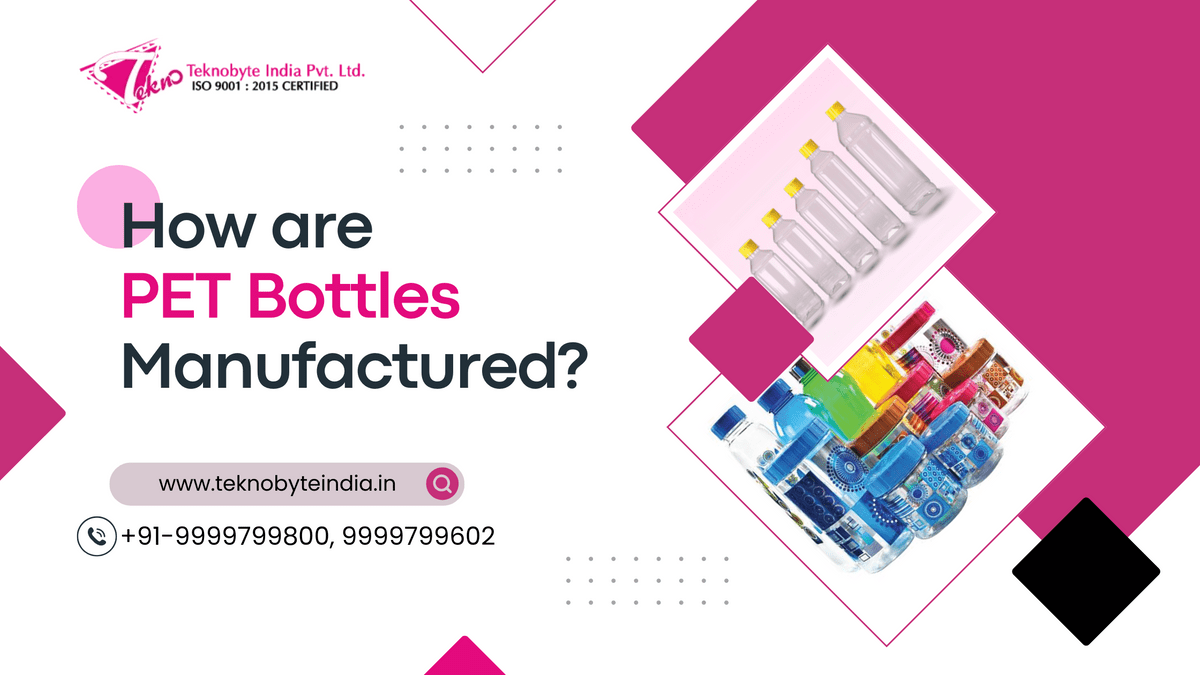PET bottles are produced using three primary manufacturing steps: the creation of PET resin, molding the resin into preforms through injection molding, and the final blow molding process that produces the bottles. Here’s a detailed overview of the process:
Here’s a detailed overview of the pet bottles manufacturing process:
1. Production of PET Resin
- Raw Materials: PET resin is synthesised with terephthalic acid (PTA) and ethylene glycol (EG) through polymerisation.
- Polymerization: The monomers are subjected to high pressure and temperature with the help of catalyst to Synthesize long chain PET polymer.
- Pelletizing: After the polymerization reaction has taken place it is then cooled and pelletized into small pellets to get rid of any moisture content.
2. Injection Molding (Preform Production)
- Heating: PET pellets are supplied to an injection molding machine in to manufacture a product where they are melted under heat.
- Injection: The molten PET is injected into a mold cavity to form preforms which then are further processed by injection stretch blow molding machines. Preforms are small blow-molded parts resembling the shape of a test tube but containing the primary forming of the bottle’s neck and thread.
- Cooling: To prevent the preforms from melting any further, the preforms are quickly cooled to final shape and thenQ ejected from the mold.
3. Blow Molding (Bottle Formation)
- Preform Heating: The preforms are reheated in a stretch blow molding machine through heating of PTFE coated metal plates where the preforms are held. They are heated uniformly to make them to be in a flexible state and ideal for stretching.
- Blowing: The preforms that are so manufactured are located to bottle molds. Air preform is drawn into the mold cavity, the cavity shapes the material forming the actual preform to suit the product model.
- Stretch-Blow Molding: This process entails both axial as well as the radial elongation of the preform until the final form of the bottle is realized.
- Cooling and Ejection: The formed bottles are quickly cooled, and the bottles are thrown off from the molds immediately.
4. Post-Processing
Quality Control: For three-ply bottles, defects that have to be checked for include formation and random checks, inspections and pressure test.
Labeling and Packaging: FIAP bags: The finished glass bottle is labeled and packed for distribution. A few bottles are subjected to certain further processing for instance adding the caps and labels depending on the ultimate application.
Evaluating the factors that need to be taken into consideration while manufacturing PET Bottles.
Material Properties: This material is selected because it is strong, light, and allows for transparency or translucency in many cases. As it is, it is also non permeable to gases to make it ideal for use with drinks more specifically beverages.
Recycling: In comparison with other materials, PET is very suitable for recycling. After-user PET bottles can be gathered, washed, and then recycled for production of new bottles or other items.
Sustainability Efforts
Recycled PET (rPET): The overall environmental impact is further lowered when virgin material is replaced by rPET in Innovia new bottles.
Lightweighting: The global usage of PET has also been significantly addressed by the reduction of the capacity of PET used to fill each bottle without compromising on the strength of the finished product.
Biodegradable and Bio-based PET: To some extent it is still being researched and developed to make even more sustainable PET alternatives in the future.
The PET bottle production line is highly mechanized and factory designed to make large production volumes measured and standardized for quality and price.
Related Posts
Related Posts

